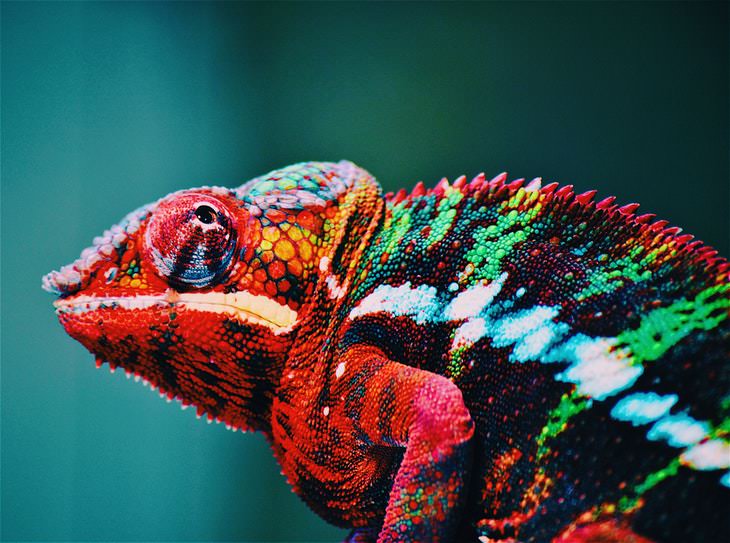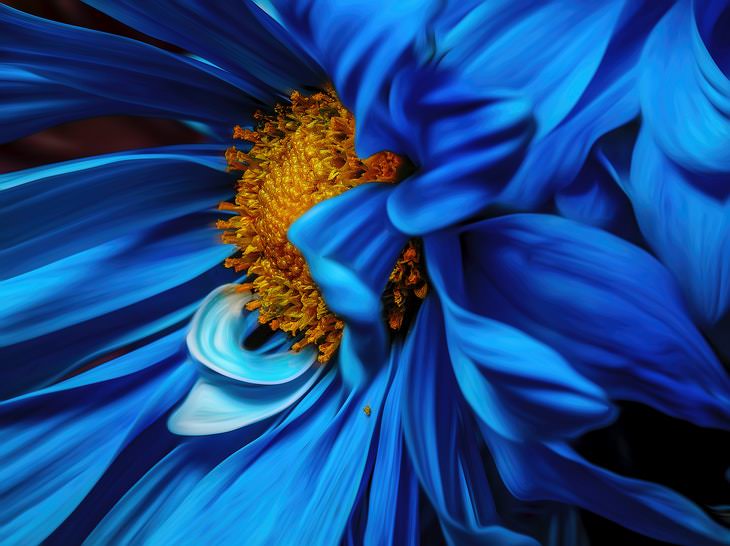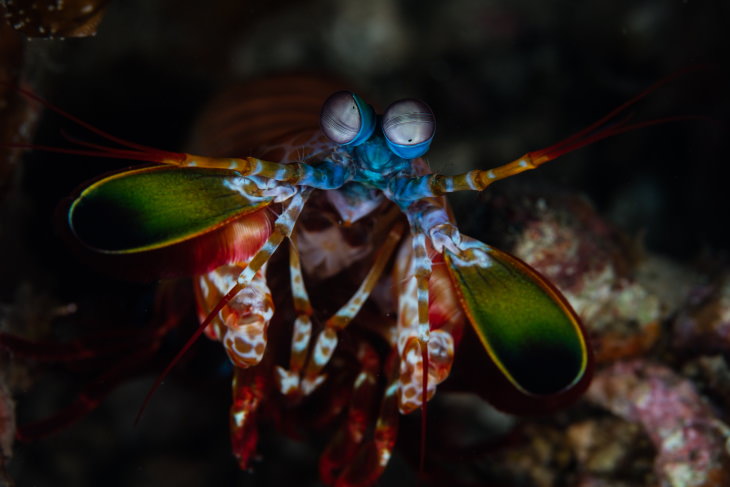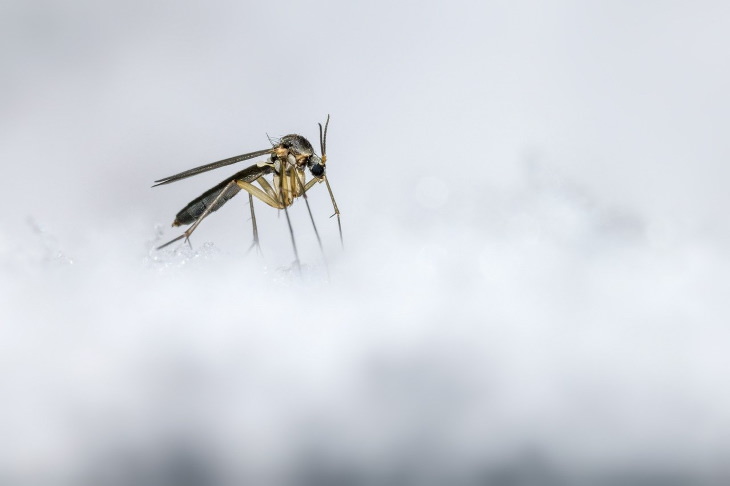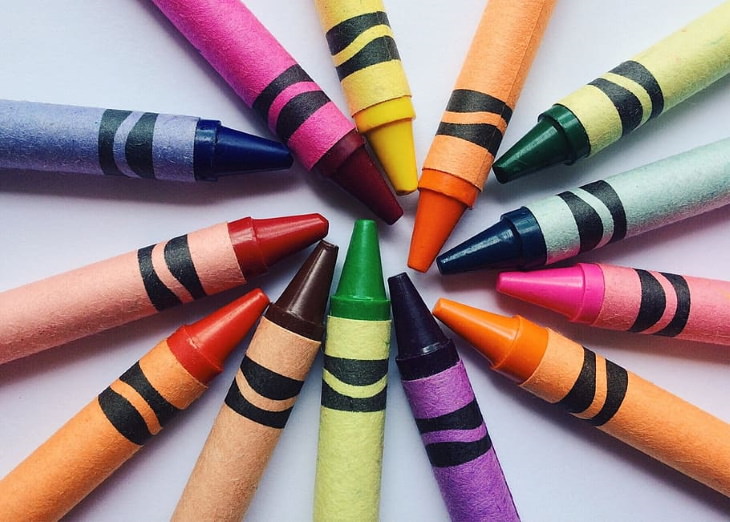1. The Sun is actually white and it’s the Earth's atmosphere that makes it appear yellow
Contrary to the common misconception, the Sun isn't actually yellow. In reality, the Sun is white, which is exactly what astronauts have confirmed and photographed from space. The Sun can appear to be yellow, orange, or even red at sunrise or sunset, but this is because the Earth's atmosphere is only letting through those warm, long-wavelength colors and so we see the Sun as a mixture of those three colors ranging from light yellow to a bright red.
2. Colors are capable of triggering childhood memories
Humans build their knowledge of the world by making associations. This is why the smell of freshly-baked cookies may remind someone of evenings at their grandma's place, or the smell of sunscreen can remind you of the beach. A similar thing happens when you perceive specific colors, which can bring you back into your most vivid childhood memories and make you re-experience the emotions you felt decades ago.
So, the next time you encounter a color that you like, why not try a fun exercise and attempt to trace back why you enjoy that specific color?
3. Not all chameleons can change to any color
Chameleons are famously known to be color-shifters, capable of changing the color of their skin in less than 20 seconds to blend into their surroundings. However, it turns out that by far not all chameleons are capable of changing their color, and the majority of species that do can only shift their color from green to black, gray, or dark brown.
Of course, there are those rare species that can shift into wild colors, such as red, blue, purple and pink, but another surprising fact is that, for the most part, the color of their skin doesn't serve as camouflage, but rather a communicative strategy. For example, chameleons can turn bright red before an attack to warm humans and other animals of their disposition. Some male chameleons can also exhibit the full range of their color palette at the same time when they're trying to attract a female's attention.
4. Ancient Greeks and Romans didn't have a word for the color blue
The names of different colors vary from language to language, and in some of these languages, a color name we now think of as very basic simply didn't exist. One such example is the color blue. Ancient Greek and Latin didn't have 'blue' as a separate color. Instead, Ancient Greeks used the word 'kyaneos' to refer to both dark blue and black, both colors associated with mourning. The word 'glaukinos', on the other hand, could either mean a light blue, green, or gray color.
5. White cars are the safest
Fascinating research from Monash University Accident Research Centre has found that the color of your car influences the likelihood of it getting into a car accident. The study examined car crash records from 1987 to 2004 and found that white cars are the least likely to get into a fatal car accident. Black cars, on the other hand, were determined by the researchers to be the most dangerous - these had a 12% increased risk to be involved in a fatal car accident.
6. The taste of foods can be influenced by the color of the tableware they're served in
Yes, it's true, the color of your coffee mug can affect how tasty the beverage within it is, at least that's what researchers at the Polytechnic University of Valencia and Oxford University have found. During the study, participants had to rate identical hot chocolate served in white, cream, red and orange plastic cups.
The beverage that came in orange and cream-colored cups were rated significantly higher than the rest, urging the researchers to conclude that the color of the containers and tableware can actually influence how tasty you perceive it to be.
7. The color you see when you're in completed darkness has a name
When people suddenly move from a light to a very dark room, they all report seeing the same uniform dark shade of gray while their eyes are adjusting to the new dark environment. The name of this interesting color is 'eigengrau', and it can be translated as 'own gray' from German.
8. The animal capable of seeing the widest range of colors is the mantis shrimp
Mantis shrimp are strange colorful creatures that have an incredibly powerful and fast punch, but probably the most outstanding feature these animals have is their incredible vision. These sea dwellers have the widest range of color perception in the entire animal kingdom, being capable of seeing in ultraviolet, infrared, and polarized light. Compared to humans, who only have three color-sensitive cones, mantis shrimp has 16, and it has been estimated that mantis shrimp see 10 times more color than the average human.
9. Red and yellow are the most appetizing colors

Who knew that the color combination of mustard and ketchup could be the most appetizing to humans? Well, now that we think of it, most fast-food chains have clearly known this for a while, just look at the logo of McDonald's, Wendy's or Burger King, just to name a few. In fact, several research articles have confirmed this theory, and the phenomenon itself is known as 'the ketchup and mustard theory'.
10. Painters had quite a limited color palette until the 19th century

For centuries, painters were limited to a small color palette, as color pigments were naturally derived and incredibly expensive. However, by the 19th century, the era of Impressionism in art, artists and manufacturers started experimenting with chemical processes to yield vivid, never before seen colors that even came in tubes, such as a bright cadmium red, for example, that became the signature color of the painter Henri Matisse. This not only expanded the artists' color palette but allowed them to paint outside, as paints were made portable for the first time.
11. The red planet, Mars, gets its color from iron oxide
Have you ever wondered why the surface of Mars is red? The planet owes its crimson hue to iron oxide, the same component that makes human blood red and rust, well, a rusty color. The color is created when the top layer of the iron-rich soil of Mars combines with oxygen atoms and becomes oxidized, turning from a dark gray to a rusty red.
12. The color pink is the most soothing color
Research in psychology has shown that the color pink is capable of suppressing anger and anxiety. By staying in a pink environment, angry and aggressive individuals typically become calmer, involuntarily. That's exactly why many institutions working with angry people, such as psychiatric facilities and jails, often paint their walls pink - to take advantage of the tranquilizing abilities of the color.
13. Mosquitoes are attracted to the color blue
The color blue is the most popular color worldwide, with most people favoring exactly this color. Unfortunately, dark blue is also the color mosquitoes are the most attracted to, and the color they most easily distinguish in a crowd. They are also more attracted to dark than light colors in general. So, the next time you're at a picnic or decide to take a stroll in the park, just wear white or any light color, and you'll have much better chances of not being "chosen" by these blue-loving pests.
14. Right before retiring, Crayola's senior crayon maker Emerson Moser announced he was actually color blind
Crayola is one of the most famous drawing and painting tool manufacturers in the world, creating crayons, markers, and other art equipment since 1903. One would think that to make all this colorful stationery, one would be required to see the entire color spectrum. Alas, a man who had worked for the company for 37 years, Emerson Moser, revealed to the world that he had been colorblind the entire time he was working for Crayola.
15. The first color infants can recognize is red
By the age of just two weeks, newborns start to distinguish colors, or just one color, to be precise - red. By the age of just 5 months, an infant will be typically able to see all major colors, but it won't be until much later, approximately a full year from that time that the child will learn to name all those colors. Still, these findings show how important color vision is to humans, as it turns out that it develops even earlier than speech or the ability to walk!



